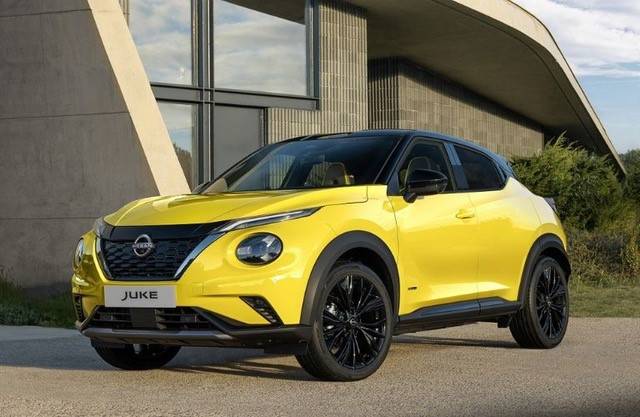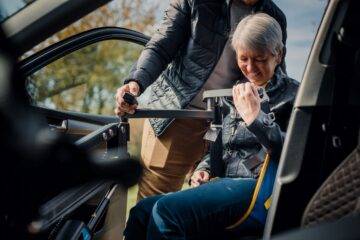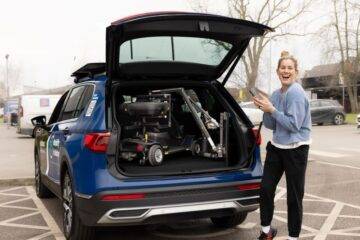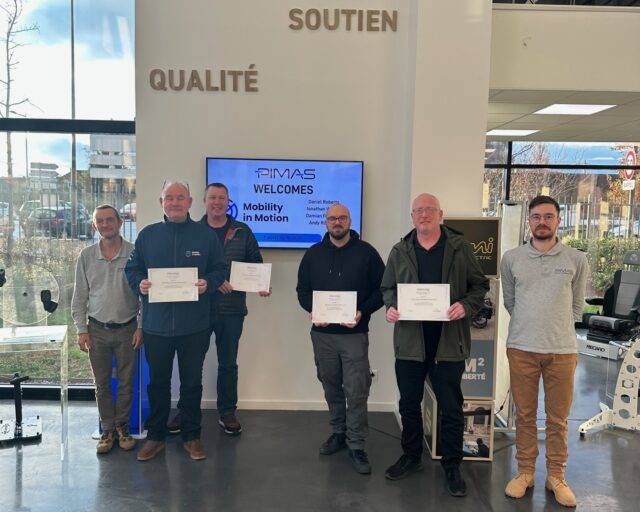Can I buy my Motability car?

If you’re coming to the end of your Motability lease, you might be hoping to buy your car and keep it. However, since December 2023, Motability no longer allows customers to purchase their leased vehicles directly.
That doesn’t mean you’re out of options. You can still choose to lease another vehicle, extend your current lease or return the car to Motability. Planning ahead will help make sure there’s no gap in your mobility. Here’s what you need to know.
When does my Motability lease end?
You can check your lease end date by logging into your Motability Scheme online account or by contacting your dealer. Planning ahead is crucial to avoid any disruptions to your mobility, especially if you’ll need adaptations added to a new vehicle.
If you take no action before your lease expires, your car will be returned automatically and you may lose access to any vehicle for a period of time.
Adapting Your Own Car for Accessibility
Did you know we can adapt your existing privately owned, financed, or second-hand vehicles – no matter the fuel type? Read our article to find out more!
Option 1: Leasing a new car through Motability
When should I start looking for a new car?
Motability recommends starting the process around three months before your lease ends. This gives you time to research vehicles, arrange test drives and discuss adaptations if needed.
Find a car that suits you
Every driver’s needs are different, and finding the right car is about more than just choosing a make or model you like. Think about the features that matter most to you. Space, comfort and technology are all important, but so is how easily you’ll be able to get in and out, and whether the driving experience feels right.
Don’t worry if the car you like seems slightly out of reach. For example, if it sits higher than you’re used to, adaptations like swivel seats can make transferring into and out of the vehicle much easier. That means you don’t have to compromise on your preferred car.
Mobility in Motion offers a wide range of adaptations to help make your driving experience safer, simpler and more comfortable. Here are some key categories to explore.
Adaptive Driving

For those unable to use the vehicle’s standard pedals and functions, there are a range of driving aids such as hand controls, pedal extensions, left foot accelerators and steering aids that can be installed. These make driving accessible to a broader range of individuals, particularly those who have limited mobility/dexterity or limb amputations.
Vehicle Access Solutions

To achieve and support access into a standard car, either from standing or seated from a wheelchair, there are various solutions that aid in the transfer process including swivel seats, person hoists and transfer plates.
Mobility Device Stowage

There are also loading systems available that enable the easy lifting and loading of a wheelchair or mobility device into the car. Boot hoists, platform lifts and wheelchair roof boxes can be used independently by the user depending on individual capabilities, or by someone else travelling with them.
Reassessing your needs before your next lease
If you’ve had adaptations fitted to your current vehicle, now is a good time to think about whether they still meet your needs. Your situation may have changed since the start of your lease, and a reassessment could reveal new products or technologies that would better support your mobility. That’s why it’s important to speak with an adaptations installer before deciding on your next steps.
If you’re considering transferring your current adaptations to a new vehicle, compatibility is key. Not all adaptations work with every make or model, so it’s vital to get advice before choosing your next car. Confirming what’s possible with an installer early on can help avoid unnecessary delays, added costs or the risk of choosing a vehicle that won’t work for you.
Some adaptations can be transferred between vehicles, while others can’t. Either way, speaking with Mobility in Motion or your adaptations installer will help clarify your options. In many cases, customers find it more cost-effective to choose a new adaptation rather than transferring an old one. The contribution fee for a new product is often lower than the cost of a transfer. Plus, new adaptations come with a full three-year warranty, which gives you added peace of mind. For this reason, many people choose to start fresh with new equipment at the beginning of each lease.
Check your details are up to date
Make sure your personal information is current, including your name, address and nominated drivers. This will prevent delays when ordering your next vehicle.
Order your new car
Once you’ve chosen your car and adaptations, your dealer will place the order. When the car is ready, they’ll arrange a collection and talk you through any new features so that you can drive away confidently.
What happens if my car isn’t ready on time?
If there’s a delay with your new car, you may be eligible to keep your current vehicle until it arrives. This is known as a Motability lease extension and helps avoid a gap in your mobility. Standard lease extensions are usually six months, though longer periods may be available in some circumstances. Motability typically contacts you to arrange this, so there’s no need to request it unless you haven’t heard from them.
New Vehicle Payment
You may be eligible for a New Vehicle Payment when you lease your next car. This is a one-off payment of £750 to help with the cost of your new vehicle. It’s available to anyone who places a new order through the scheme and hasn’t already received the payment since it was introduced in 2022.
The payment is made shortly after you receive your new car and doesn’t need to be applied for separately.
Option 2: Extending your current lease
Some customers may be eligible to extend their current lease, especially if their car is still suitable or if their new vehicle is delayed.
How much does it cost to extend my Motability lease?
Extending your lease typically does not involve any additional upfront costs, and your existing lease payments will continue. Your dealer or Motability will confirm any changes to your payment schedule if applicable.
Do I get the New Vehicle Payment if I extend my lease?
Yes, but you’ll receive the payment when you order your next car, not during the extension period. You’ll need to lease a new car through the scheme to be eligible.
Option 3: Returning your Motability vehicle
If you decide not to lease another car, you can return the vehicle at the end of your lease and leave the scheme. There are several reasons to hand back a Motability car early, including changes in personal circumstances or no longer needing a vehicle.
Giving your vehicle back
You’ll need to return the car along with all keys, the logbook and, if it’s an electric vehicle, any charging equipment. Your dealer will guide you through this process. If you plan on returning a Motability car early, try to give at least eight weeks’ notice. In some cases, you may be charged if the vehicle is damaged or if lease conditions haven’t been met.
What to expect from a home collection
In some cases, Motability can arrange for your car to be collected from your home. The collector will carry out a brief inspection and confirm that everything has been returned.
Do I need an MOT test?
No. You don’t need to get an MOT before returning your vehicle. Motability takes care of the final checks as part of the return process.
The Good Condition Payment explained
If you’ve looked after your car and it meets Motability’s standards, you could be eligible for the Good Condition Payment. For standard three-year leases, this is currently up to £250. For customers on a five-year lease, the amount increases to up to £350. The payment is sent to you after the vehicle is returned and inspected.
What should I do if my car has adaptations?
If your car has been adapted through the Motability Scheme, there’s no action required when returning the vehicle. You don’t need to remove or return any equipment separately. Just hand the car back as normal.
It’s important to understand that adaptations provided through the scheme are funded and owned by Motability. Although the equipment is fitted to meet your personal needs, it’s not something you own. Like the car itself, adaptations are included as part of your lease agreement.
Because of this, you won’t be able to take the adaptations with you or ask for them to be removed and returned. If you need similar adaptations on your next vehicle, a new assessment will be carried out and new equipment installed.
What happens to insurance and breakdown cover?
Once your lease ends, your insurance and breakdown cover will also stop. If you need temporary insurance before receiving your next vehicle, you’ll need to arrange this separately.
Road tax, servicing and warranty cover also end when the vehicle is returned. So, if you’re planning to stay mobile during the transition, make sure you have alternative cover in place.
How Mobility in Motion can support at the end of your lease
Whether you’re switching to a new vehicle, extending your current lease or returning your Motability car, Mobility in Motion is here to help you plan your next steps with confidence.
With the right adaptations, you don’t have to compromise on your next vehicle. Our team can help you choose the car you want and make it work for your individual needs. This might involve transferring existing adaptations, recommending new solutions or simply offering guidance on what’s possible.
To find out more about vehicle adaptations, take a look at our resource library or get in touch with the team.
You can also explore your options by visiting us at Motability Scheme Live, Harrogate at The Great Yorkshire Events Centre in August or Motability Scheme Live, Northern Ireland at Eikon Exhibition Centre in September.

Lifestyle
Home Health Checks: Protecting Air Quality, Warmth & Wellbeing.
As the colder months approach, our homes play a vital role in keeping us warm, comfortable, and safe. Yet winter can also bring challenges such as…

Lifestyle
Prepare Your Vehicle For Winter: Must-Have Features For Disabled Drivers & Passengers
With colder weather on the way, now is the ideal time for disabled drivers and passengers to prepare their vehicles for the challenges of winter. Lower…

News
We Become the Exclusive UK Distributor for Pimas Driver-Control Solutions
We’re excited to announce that Mobility in Motion has become the exclusive UK distributor for Pimas driver-control solutions, including the brand-new Voice Control system. This is…